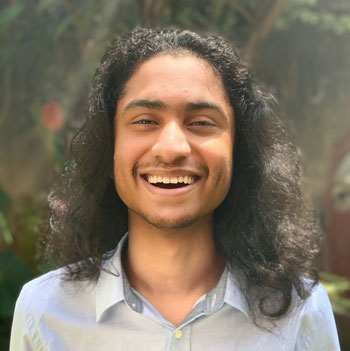30 years later we are still fighting the same oppression that plagued the Moi regime. From the disdain of human rights that flows through all the arms of government to suppression of dissent and abuse of constitutionalism in Kenya. Ironically, on the thirtieth anniversary of the Saba Saba (pro-democracy) movement, the state unleashed its most recent crackdown on freedom of expression, right to picket and peaceful assembly and most notably suppression of dissent. The violence on Saba Saba started from the very places that the state has killed, abused and brutalized its residents. As early as 7:00am on Tuesday, 7 July 2020, police had already barricaded activists within the Mathare Social Justice Centre, raiding of the Ghetto foundation offices and arrests already made in Kayole, and all through the morning arrests continued taking place from Kibera to CBD.
The very Police Officers Kenyans were protesting against, are the very same ones who continue to be used as government puppets to brutalise unarmed civilians.
While in town, many protestors who had seen the call to action on the posters had already begun assembling in Nairobi’s CBD, by the Tom Mboya memorial statue outside the Kenya National Archives. The state itself had already deployed hundreds of armed policemen and the very much feared General Service Unit in the CBD, militarizing every point of assembly and entry into the ‘suspected’ areas of assembly. This was the first protest for most of the attendees who had already gathered at the assembly point, this was a motivating factor for the protest to happen regardless of the heavy militarization. The solidarity and turnout from folks of all walks of life engendered a sense of strong community especially for young people ready to demand for the change and freedom they wanted to see.

The first clouds of teargas appeared at about 9:30am outside the Archives and little did the protestors know that teargas, handcuffs and batons will be the most memorable thing about the thirtieth anniversary of this historic pro-democracy memorial.
The set program of the 2020 Saba Saba celebration was for the protesters to march to the historic Kamukunji grounds from their respective social justice centres. However, foreseeing the state’s plans to use the public health laws to criminalize constitutional rights, the protesters decided to ‘march’ to town and begin the protests in the CBD. The Saba Saba day activities made a huge impact and not only exposed the ills of the state and the ruling class, but also publicly set ablaze the issues of police brutality, authoritarian leadership and abuse of constitutional rights.
Unlike previous marches memorializing Saba Saba planned and organized by the Social Justice Centres; this particular march had no standard branding. Non-governmental organizations normally plaster their logos all over the T-shirts they provide, and huge banners decorated with many stickers of logos and ‘supported by’ local and international NGOs. This march was organized solely by the younger activists and organizers within the social justice centres and the funding was largely crowd-sourced. The irony on this historic day was that one of the well-known and influential NGOs based in Kenya decided to host a webinar so-called ‘in solidarity with’ the protestors who were being brutalized and were risking their lives on the streets of the CBD. This was one of the most clear indications of the power of ‘donors’ in Kenya and their use of NGOs as tools of imperialism. The ‘homeguard’ actors within both the organizing and civic spaces ensure that neo-liberalism continues to thrive.
On the side of the organizers we must also acknowledge the lack of proper organization concerning especially crowd control in the CBD, where the masses had to take it upon themselves to re-organize and establish new routes. Harambee Avenue was cordoned off with barricades manned by the General Service Unit, armed agents of the state. Organizers within the masses and social justice activists, notably Wanjira Wanjiru and Steve Mwangi, went out of their way to organize and guide those assembled; it was impressive to see young folk take the initiative to care for the crowds with quick regrouping tactics even after the enforced disruptions. This was an irrefutable demonstration that the youth of Kenya were tired of begging for their rights, and were ready to demand for them.
We must also recognise the difficulties of the Social Justice Centres’ steering committee to share information on routes and assembly points in good time. With the projected dangers and state retaliation, the steering committee should have ensured that no groups were marching from their centres to the CBD; but rather using collective transport to assemble in town. This would have avoided the police interventions and arrests at the assembly points of different social justice centres. This mishap happened due to the stringent hierarchies existing within the ranks of the ‘movement’ – there was a top-down approach to the relaying of information and could have been easily avoided – a learning experience for other marches, picketing activities and protests in the future.
The state is continuously working on new ways to shrink spaces for protest and discourage organized protests through various new tactics established to infiltrate and co-opt the planned activities of the day. After the first few arrests in the CBD, it was reported that plain clothes police officers were marching side by side with the protestors, and using this opportunity to identify targets for arrest and alerting the arresting officers on who to arrest and how to identify them. The internet has become an essential tool for communication and organizing. During the march, therefore, protestors would share vital information via social media platforms – the state agents would follow the messaging via replies on twitter, facebook and instagram and be fully informed on how, when and where to infiltrate the planned activities. In addition, the first thing the officers would do would be to confiscate the arrested protestors’ cell phones. In an article by data protection expert and researcher, Tess Wandia, she notes: ‘It is not only [by] using tear gas and batons that the state muzzles and limits freedom of expression, but also when it limits our means to communicate. State machinery understands the power of the internet, and is rapidly evolving and adapting.’

We should also acknowledge the need for follow-up activities after a protest. Protests are not a one-time event, they are living activities that continue to demand that their demands be met, there must be involvement by the public and a sort of continued push for accountability. Arundhati Roy explains that, ‘The Pandemic is a Portal’- picking up from this we must look at protest as a portal, for a protest to fully make an impact, we must ensure it is followed up with further activities to enhance impact and follow through with accountability.
This Saba Saba march in itself was historic, as it was as inclusive as it could be focusing on minority rights as the collective social justice advocates and parties continue pushing for the collective rights of every Kenyan. There was also a strong front for political education and agitation on why the protestors were marching. For many this was not just a protest, it was liberation and a chance to
learn and educate too. The pamphlets being passed around were created in both English and Kiswahili and a simple ‘Why we march’ manifesto clearly summed up the objective.
As the day came to an end and the last cohort of protestors at the Central Police Station were released, there were a total number of 65 documented arrests, more than 23 canisters of teargas shot at peaceful protests all over Nairobi with close to over 5 cases of documented excessive use of force used by the National Police service.
As the organizers and collective social justice centres continue learning, reflecting and planning follow-up activities to agitate and demand for change, we are sure that, just like the fighters who came before us, freedom is certain.
Viva la revolucion!









